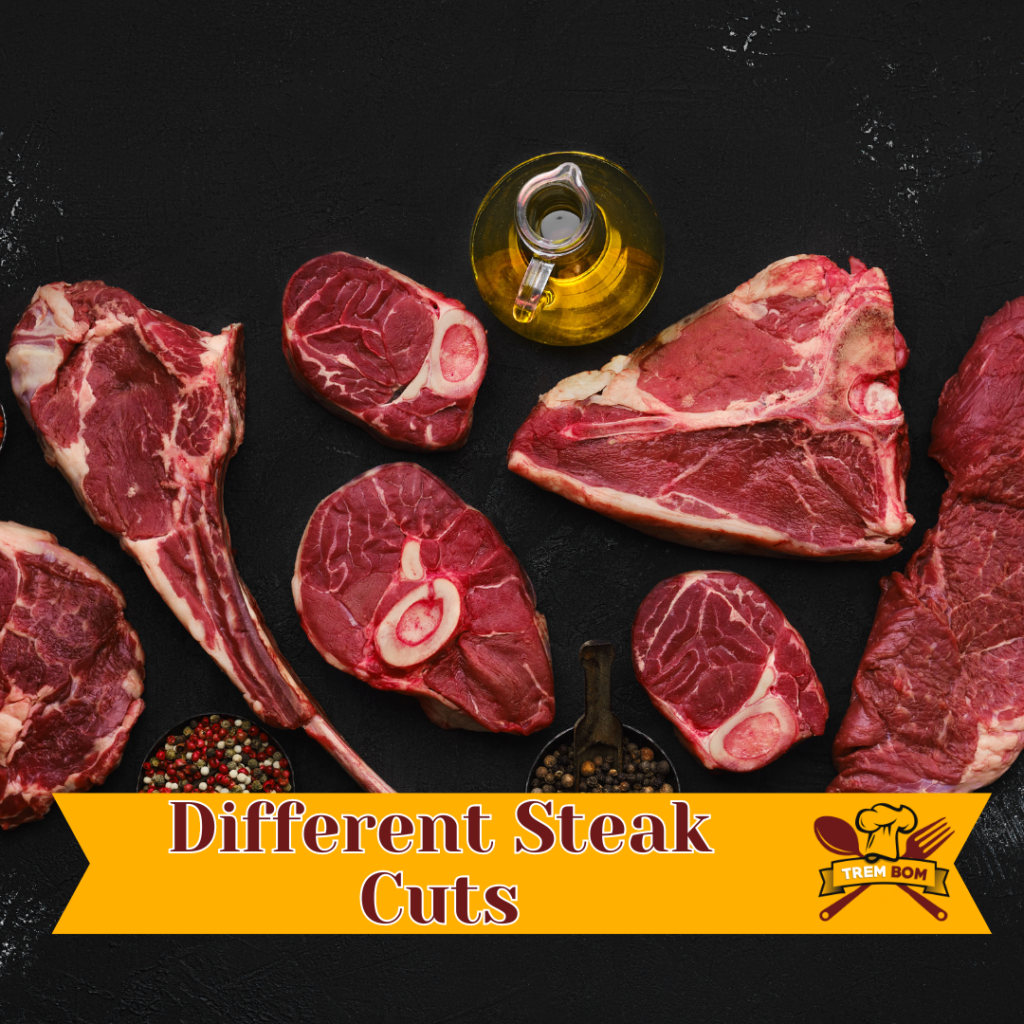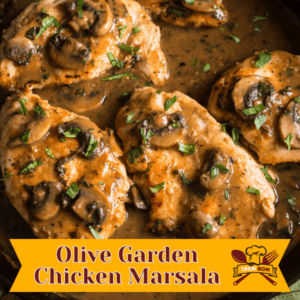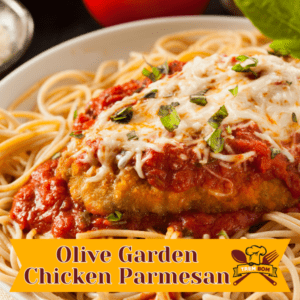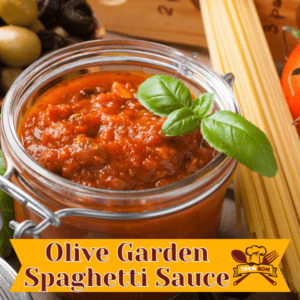
If you’re a steak lover, it’s essential to understand the different types of steak cuts available and how to cook them to perfection. Choosing the right cut of steak can make a significant difference in the taste and tenderness of the meat. From the lean and flavorful flank steak to the juicy and marbled ribeye, each cut offers its own unique flavor profile and texture.
This comprehensive guide will explore the world of different steak cuts, providing tips on how to choose the best cut, how to prepare it, and how to cook it to perfection. Whether you’re looking for a mouth-watering steak for a special occasion or just want to experiment with new cuts, this guide has got you covered.
Key Takeaways
- Understanding different steak cuts is crucial for achieving the perfect taste and tenderness.
- Each steak cut offers its own unique flavor profile and texture.
- Choosing the right cut of steak is essential for a great dining experience.
- Preparing and cooking steak correctly can make all the difference in flavor and texture.
- Experimenting with different steak cuts and cooking techniques can elevate your culinary skills.
Understanding Different Types of Steak Cuts
Before we get into the cooking techniques, let’s take a closer look at the various steak cuts available. The flank steak, cut from the belly of the cow, is lean and flavorful and ideal for marinating. The rib steak, cut from the center of the rib section, has a balance of fat and meat for a juicy and tender outcome. The sirloin steak, cut from the back of the cow, is lean and has a mild flavor. The ribeye, cut from the front of the cow, is marbled with fat, making it an extremely flavorful and tender cut.
Then there’s the tenderloin, cut from the center of the cow, which is incredibly tender and lean, making it a perfect choice for a special occasion. Finally, the skirt steak, taken from the cow’s diaphragm, has a unique texture and flavor, and is often used in dishes like fajitas or in Asian cuisine.
Understanding Different Steak Cuts
To summarize:
| Steak Cut | Flavor Profile |
|---|---|
| Flank Steak | Lean and flavorful |
| Rib Steak | Well-marbled and juicy |
| Sirloin Steak | Lean with mild flavor |
| Ribeye | Marbled with fat for rich flavor |
| Tenderloin | Incredibly tender and lean |
| Skirt Steak | Unique texture and flavor |
Each cut of steak will require a different cooking method to bring out the best flavor and tenderness. Keep this in mind and choose the cooking technique that best suits your cut for a delicious and satisfying meal.
Popular Steak Cuts for Grilling
Grilling steak is a favorite pastime for many, and certain cuts are perfect for the grill. Here are some of the most popular steak cuts for grilling:
| Steak Cut | Flavor Profile | Ideal Cooking Method |
|---|---|---|
| T-Bone Steak | Tenderloin on one side, strip steak on the other. Juicy and flavorful | Grill over high heat for 6-8 minutes per side for a medium-rare steak |
| Porterhouse | Similar to T-Bone but with a larger tenderloin portion. Perfect for sharing | Same as T-Bone, but may require a longer cooking time due to its thickness |
| Hanger Steak | Flavorful with a chewy texture | Marinate for at least an hour before grilling over high heat for 3-4 minutes per side for a medium-rare steak |
| New York Strip | Lean and tender with a bold flavor | Grill over high heat for 3-4 minutes per side for a medium-rare steak |
| Bone-In Ribeye | Marbled and flavorful with a bone for added depth of flavor | Grill over high heat for 6-8 minutes per side for a medium-rare steak |
These cuts are known for their juicy tenderness and are perfect for achieving that beautiful char and smoky flavor on the grill. Whether you prefer a rare or well-done steak, these cuts will not disappoint.
Oven and Pan-Seared Steak Cuts
If grilling isn’t an option, fear not! There are plenty of steak cuts that can be cooked to perfection in the oven or on the stovetop. Two of the best options are the boneless top sirloin and flat iron cuts.
Top Sirloin: This cut is a leaner option, but it still packs a flavor punch. To achieve a perfect sear, season the steak with salt and pepper before adding it to a hot pan with a bit of oil. Cook for about 4-5 minutes on each side, then transfer to a preheated oven (375°F) to finish cooking to your desired temperature. For added flavor, try marinating the meat for a few hours before cooking.
Flat Iron: Similar to the top sirloin, the flat iron steak is another lean and tender cut. To get a great sear, heat oil in a large pan over high heat and add the steak. Cook for about 3-4 minutes on each side, then transfer to a preheated oven (400°F) and cook for an additional 5-7 minutes until it reaches the desired doneness. Flat iron steak also benefits from a good marinade.
Whether you’re using the oven or stovetop, remember to let your steak rest for at least 5 minutes before cutting. This allows the juices to redistribute and makes for a more tender steak.
Steakhouse Favorites: Ribeye and Prime Rib
Ribeye and prime rib are two of the most popular steak cuts on any steak lover’s list. These cuts are incredibly tender and flavorful, with just the right amount of marbling to provide a juicy and succulent meal.
When cooking ribeye and prime rib, broiling is an excellent cooking method that many chefs prefer. Broiling allows the steak to cook evenly, sealing the juices and locking in the flavor.
For ribeye, the standard cooking method involves broiling the steak for 6-8 minutes on each side, depending on its thickness. For prime rib, it’s best to start with a high heat (450°F) for 15 minutes, then continue cooking at a lower temperature (325°F) for about 15-20 minutes per pound. This will result in a perfectly cooked roast that is tender, juicy, and delicious.
No matter which cooking method you choose, ribeye and prime rib are sure to be a crowd-pleaser at any dinner party or family gathering.
Exploring Unique Steak Cuts
For those looking to venture beyond the traditional cuts, there are unique options to explore. One such cut is the tomahawk steak, which is a visual masterpiece with its long bone adding to its rustic appeal. This cut is perfect for grilling and is best served medium-rare to medium.
Another unique option is the cowboy steak, also known as a bone-in ribeye or a tomahawk ribeye. This cut is taken from the center of the rib section and is characterized by its large size and intense flavor. It is perfect for grilling or broiling and is best served medium-rare to medium.
Skirt steak is a versatile cut that comes from the belly of the cow, and it is perfect for grilling or pan-searing. It is known for its intense flavor and is best served medium-rare.
Finally, the bone-in ribeye steak is unique in that it comes with a bone attached, adding an extra layer of flavor to the meat. This cut is perfect for grilling or broiling and is best served medium-rare to medium.
Each of these unique steak cuts offers a different flavor profile and presents an opportunity to explore new culinary experiences. Try them all and see which one becomes your new favorite!
Cooking Tips and Techniques
Cooking the perfect steak requires attention to detail and knowledge of the cut of beef. The center of the rib section is where the most tender cuts of steak can be found. From filet mignon to ribeye, these cuts are known for their tenderness and flavor. The flank steak, which comes from the belly of the cow, is another flavorful and popular cut.
When cooking steak, it’s important to let it come to room temperature before cooking. This allows for even cooking and prevents the meat from being tough. Additionally, the type of cooking method used depends on the cut of steak. For thinner cuts such as skirt steak, a quick sear on high heat is ideal, while thicker cuts like ribeye may require a longer cooking time on a lower heat.
To ensure the perfect doneness, use a meat thermometer to check the internal temperature of the steak. For medium-rare, the temperature should be around 135°F, while medium is around 145°F. Remember to let the steak rest for a few minutes before cutting into it, allowing the juices to redistribute and creating a more tender and flavorful steak.
“The key to cooking the perfect steak is to start with a quality cut of beef and use the right cooking method for that cut.”
For added flavor, consider marinating the steak before cooking. A simple marinade of oil, vinegar, and herbs can add a delicious twist to any cut of steak. If using a marinade, remember to pat the steak dry before cooking to ensure a good sear.
Finally, seasoning the steak with salt and pepper is essential to bring out the natural flavors of the beef. Apply the seasoning generously just before cooking to ensure the perfect balance of flavor in every bite.
Pairing and Serving Suggestions
A perfectly cooked steak pairs perfectly with a variety of sides and flavors. Here are some delicious ideas to inspire your next steak dinner:
Steak Salad
For a healthy and refreshing meal, try pairing your steak with a fresh salad. Top your greens with thinly sliced steak, cherry tomatoes, avocado, and a tangy vinaigrette.
Steak Tacos
Tacos aren’t just for ground beef or chicken. For a Mexican-inspired meal, fill soft tortillas with sliced steak, shredded cheese, lettuce, and your favorite salsa.
Beef Tenderloin
If you prefer a milder flavor, opt for beef tenderloin. This cut is incredibly tender and pairs well with a variety of sauces, such as a creamy mushroom sauce or a tangy chimichurri.
No matter what cut of steak you choose, these pairing and serving suggestions are sure to impress your taste buds.
Conclusion
By now, you should have a good understanding of the different steak cuts and how to cook them to perfection. Remember that choosing the right cut of meat is just as important as the cooking method. Don’t be afraid to experiment with different techniques and seasonings to create a unique and delicious dish.
When it comes to cooking the perfect steak, it’s all about patience and attention to detail. Allow the meat to rest before serving, and don’t be afraid to use a meat thermometer to check for doneness.
Final Thoughts
Whether you’re grilling a T-bone steak or oven-cooking a boneless top sirloin, a perfectly cooked steak is a thing of beauty. Pair it with your favorite sides and beverages, and enjoy a meal that satisfies your taste buds and elevates your dining experience.
So go ahead, try out different steak cuts and cooking methods, and discover your favorite way to enjoy this classic dish.
FAQ
What are the different steak cuts?
The different steak cuts include strip steak, filet mignon, flank steak, ribeye, sirloin, tenderloin, skirt steak, t-bone steak, porterhouse, hanger steak, top sirloin, flat iron, ribeyes, prime rib, tomahawk steak, cowboy steak, and bone-in ribeye steak.
How do I choose the right steak cut?
The right steak cut depends on your personal preference for tenderness, flavor, and cooking method. Consider the characteristics and marbling of each cut, and whether you plan to grill, pan-sear, broil, or cook in the oven.
How do I cook a steak to perfection?
Cooking a steak to perfection involves selecting the appropriate cooking method, seasoning it well with salt and pepper, and monitoring the internal temperature. For grilling, use a meat thermometer to achieve your desired level of doneness. For oven or pan-searing, sear the steak on both sides and finish it in the oven at the recommended temperature.
What are some popular steak cuts for grilling?
Popular grilling cuts include t-bone steak, porterhouse, hanger steak, new york strip, and bone-in ribeye. These cuts are known for their juicy tenderness and are perfect for achieving a beautiful char and smoky flavor on the grill.
Can I cook steak cuts in the oven or on the stovetop?
Absolutely! Certain steak cuts, like boneless top sirloin and flat iron, can be cooked to perfection in the oven or on the stovetop. Sear the steak in a hot pan and finish it in the oven, or cook it entirely in the oven at the recommended temperature. These cuts are incredibly tender and can be cooked to your desired doneness with ease.
How do I cook ribeye and prime rib?
Ribeye and prime rib can be prepared using various cooking methods, including broiling. For ribeye, consider grilling or pan-searing to achieve a deliciously tender and flavorful steak. Prime rib is best slow-cooked in the oven or using a sous vide method for ultimate tenderness.
Are there any unique steak cuts to explore?
Absolutely! Unique steak cuts like the tomahawk steak, cowboy steak, skirt steak, and bone-in ribeye steak offer different flavors and presentations. The tomahawk steak is known for its impressive bone-in presentation, while the cowboy steak is flavorful and hearty. Skirt steak is incredibly versatile and can be used for various dishes, and bone-in ribeye steak offers an added depth of flavor.
What are some essential cooking tips for steak?
Some essential cooking tips for steak include selecting the right cooking method based on the cut, properly seasoning the steak with salt and pepper, and letting it rest before slicing. Additionally, consider marinating the steak for added flavor and always use a meat thermometer to ensure the desired level of doneness.
What are some pairing and serving suggestions for steak?
Pairing and serving suggestions for steak include creating a refreshing steak salad, indulging in flavorful steak tacos, or serving cuts like beef tenderloin with complementary sauces and sides. Beef tenderloin has a mild flavor that can be enhanced with various seasonings and accompaniments.






